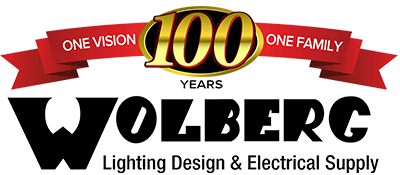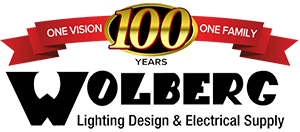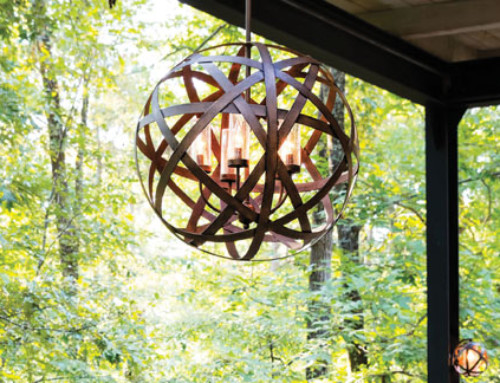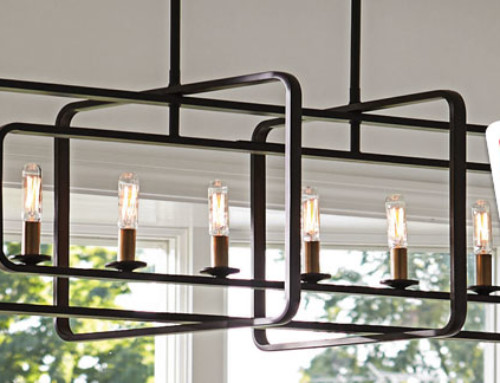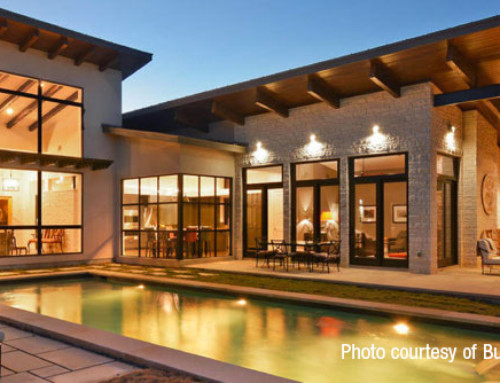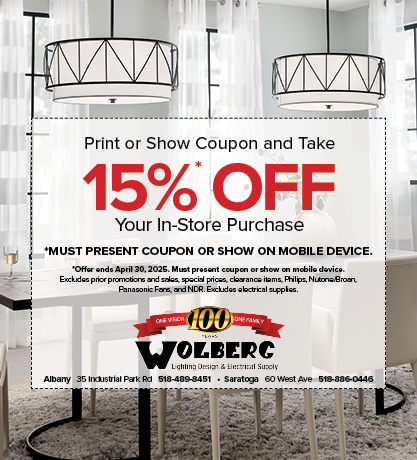Upgrading lighting is one of the easiest ways to instantly update your home decor. And the most effortless way to change your lighting is by using table lamps. All you need to do is put a plug in an outlet and, voila, instant ambiance.
Joe Rey-Barreau, educational consultant for the American Lighting Association and professor of interior design at the University of Kentucky, says, “We’ve got probably the most diverse level of design and variety of styles that I have ever seen in the lighting industry and I think it’s reflective of the general public’s willingness to look at design as a main part of their life.” People are more conscious of how they can improve their space, he believes, thanks to shows such as those on HGTV.
As the public has become more design savvy, says Rey-Barreau, it’s given the green light for manufacturers to look at table lamps in a new way “which has created a tremendous explosion in design….The beauty of lamps today is just the extraordinary variety of style – shapes, forms, textures.”
Metal finishes are “really exploding in the marketplace,” continues Rey-Barreau, citing the variety of finishes from “very polished, brilliant finishes like polished steel to very, very subtle shades like bronze and pewter.” Finishes tend to be more textured which, he says, gives lamps “a lot of personality and a lot of soul, so to speak.”
Todd Langner, president of Kenroy-Hunter Lighting Group, a lighting manufacturer based in Jacksonville, FL, recently attended the High Point Furniture Show where he noticed several key trends. “The most obvious, which has gone on for at least three shows, and is most clearly here to stay, is the use of color.” The two most popular color palettes at the moment are Caribbean-inspired with pale orange and aqua hues; and earth tones like burnt orange, olive green, and eggplant.
Dave Director, CLC, president of Connecticut Lighting Center, a Hartford-based retailer, agrees. “What we’re seeing is a lot of color, particularly brighter colors, particularly iridescent-y kind of things. People are looking for color to give them that brighter look.”
The other trend Langner observed is that “after years of being inundated with very goopy, drippy, fancy, over-adorned resin product that the industry has been pushing, the buyers have made it very clear that they want natural materials and simpler looks.” Consequently, Kenroy-Hunter has been focusing on manufacturing lamps in wood, ceramic, brass, and slate.
Dave McKee, COO of Seattle Lighting, a retailer with showrooms in the Pacific Northwest, says that rich bronze tones and rich colors like reds are selling well as are natural materials like iron and marble. “There’s been a general swing towards quality and natural materials,” he observes.
Lampshades are getting more adventurous and whimsical, both in their shape and in the use of color. Years ago it was almost impossible to sell a shade that wasn’t white or cream. Today darker shades are more popular, especially when used as accent lighting. “There’s a lot of freshness in the shapes,” says Langner, noting that they’re veering away from the traditional bell form or pleats.
McKee notes that 60s style drum shades are “hot.” “People are becoming more interested in shades,” he says. “They’re looking for variety, different treatments, and different fabrics.” Rey-Barreau says that lampshades made out of paper have become very popular and that paper gives light a “wonderful texture.” Murano glass shades are also popular.
The trend for shades adorned with crystal or beads “is pretty much gone,” says Langner.
While table lamps can be used for task lighting, Rey-Barreau notes an explosion of “very, very small lamps” used for accent lighting and to “add ambiance.” Their diminutive size allows them to be placed on non-traditional places like bookshelves and windowsills.
However, Kenroy-Hunter has taken the opposite tack when it comes to size. Langner says that his retailers are requesting lamps that are a little over scaled – perhaps in response to today’s home which is getting progressively larger. Consequently, most of the company’s table lamps are in the 30″ to 32″ range.
In the past people bought lamps and used them forever. Today, notes Director, more people are routinely buying lamps to update their décor – much like one would buy a new set of bed linens or pillows.
As Director notes, “The price of lamps hasn’t gone up, it’s gone down.” That affordability has made it easier than ever for people to switch out their lamps periodically. It’s not economically feasible for most people to keep up with the latest design trends by switching out high-ticket items like sofas, but by changing something like pillows and lamps one can instantly change the whole look of a room.
The first thing people notice when they walk into a space, says Director, is the quality of the light. “Lighting affects us in so many ways….When you flick on
Rey-Barreau notes that there’s even a formula by which one can determine how much lighting a room needs which is roughly two watts per square foot, so a 12 by 12 room would need approximately 300 watts — or four lamps with 75-watt bulbs. “As a minimum you should have three lamps per room,” asserts Rey-Barreau, “because that really creates this nice triangle of light in the space.”
Today, notes Rey-Barreau, people are willing to spend more money on their homes. “More disposable income puts more pressure on manufacturers to create more variety because people are saying ‘I can afford it, I’d like to have the option of being able to buy it’.”
Ultimately, says Rey-Barreau, “there’s such a variety of styles and sizes it’s usually possible, if you look hard enough, to find a place for a lamp and to find a fixture that meets your criteria.”
